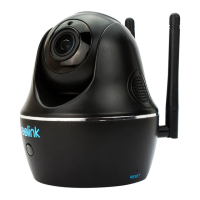30
Tips:
1. The day is divided into four periods by default, you may change each period’s start and
end time to best match the changing lighting conditions in your location.
2. During the day time, the light is good enough for the camera to capture the whole
scenario, the sensitivity is suggested to set the values between 5–10 which will give
good results.
3. During the night time, the motion detection is more sensitive, the value is suggested to
set to 25-30 or even higher which will significantly avoid some fault trigger.
NOTE:
The motion detection will be affected by the light and weather, it is suggested that you
should test your motion detection sensitivity both during the day and at night to ensure your
sensitivity setting is suitable for either lighting condition.
False Triggers
Setting the motion detection at high sensitivity levels (4 or lower) increases the
frequency of false alarms. On the other hand, low sensitivity levels (20 or higher)
increase the risk that a significant motion event (such as an intruder) will not trigger
the motion detection to record.
Check the Motion Detection settings both during the day and night. In low-light
conditions (or when your cameras are using infrared night vision) the Camera may be
more or less sensitive to motion, depending on the circumstances. The difference
might be very dramatic!
Weather
The weather conditions are going to affect your motion detection. Dramatic weather
phenomenon such as heavy rain, strong winds, lightning and so on, may trigger the
motion detection with surprising frequency. On the other hand, things like fog, mist and
other obscuring kinds of weather might mask or obscure something moving to the
point that the Camera fails to detect them.
Here are a few steps you can take to minimize the amount of noise in your images.
1. Try adjusting the Image Settings to fine-tune the brightness and contrast to get a
more stable image.
2. Limit the motion sensitive area to only the areas in view that a target could be. In
particular, large featureless areas in the camera’s view are the ones most likely to
give false triggers - turning off the motion sensitivity to any area a target cannot
move in front of will help reduce false triggers.
Note: The motion detection feature will seem more sensitive at night, particularly when
using low-light or active infrared cameras. We recommend that you test your motion
detection sensitivity both during the day and at night to ensure your sensitivity setting
is suitable for either lighting condition.
4.4.2 Motion > Schedule
You can set up the time schedule when the camera will detect motion. The red box means
when motion is detected, it will trigger an alarm.

